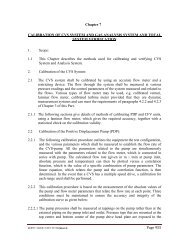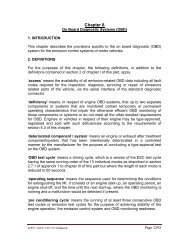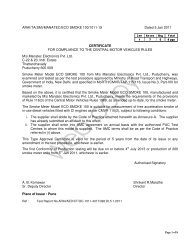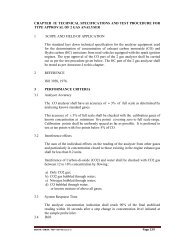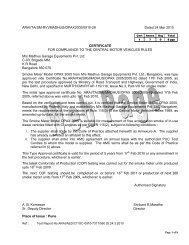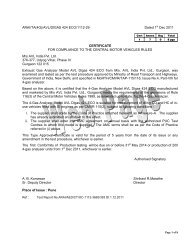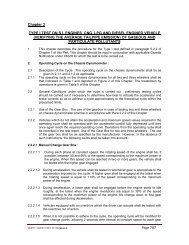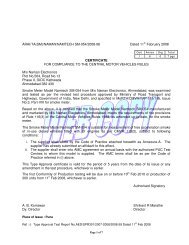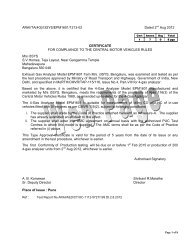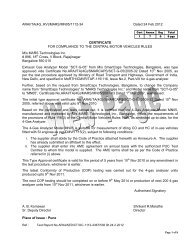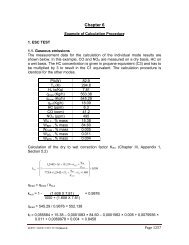Amendment No. 1 to MoRTH/CMVR/TAP-115/116
Amendment No. 1 to MoRTH/CMVR/TAP-115/116
Amendment No. 1 to MoRTH/CMVR/TAP-115/116
You also want an ePaper? Increase the reach of your titles
YUMPU automatically turns print PDFs into web optimized ePapers that Google loves.
7.3.1. Conditions of measurement7.3.1.1. The Type II test specified in paragraph 6.6. must be measured immediately after theType I test with the engine at normal idling speed and at high idle.7.3.1.2. The following parameters must be measured and recorded at normal idling speed andat high idle speed:(a) the carbon monoxide content by volume of the exhaust gases emitted,(b) the carbon dioxide content by volume of the exhaust gases emitted,(c) the engine speed during the test, including any <strong>to</strong>lerances,(d) the engine oil temperature at the time of the test.7.3.2. Sampling of exhaust gases7.3.2.1. The exhaust outlets shall be provided with an air-tight extension, so that the sampleprobe used <strong>to</strong> collect exhaust gases may be inserted in<strong>to</strong> the exhaust outlet atleast 60 cm, without increasing the back pressure of more than 125 mm H 2 0, andwithout disturbance of the vehicle running. The shape of this extension shallhowever be chosen in order <strong>to</strong> avoid, at the location of the sample probe, anyappreciable dilution of exhaust gases in the air. Where a mo<strong>to</strong>rcycle is equippedwith an exhaust system having multiple outlets, either these shall be joined <strong>to</strong> acommon pipe or the content of carbon monoxide must be collected from each ofthem, the result of the measurement being reached from the arithmetical average ofthese contents.7.3.2.2. The concentrations in CO (C CO ) and CO2 (C CO2 ) shall be determined from themeasuring instrument readings or recordings, by use of appropriate calibrationcurves. The results have <strong>to</strong> be corrected according <strong>to</strong> paragraph 8.2.8. Analysis of results8.1. Type I tests8.1.1. Exhaust emission and fuel consumption analysis8.1.1.1. Analysis of the samples contained in the bagsThe analysis shall begin as soon as possible, and in any event not later than 20minutes after the end of the tests, in order <strong>to</strong> determine:- the concentrations of hydrocarbons, carbon monoxide, nitrogen oxides andcarbon dioxide in the sample of dilution air contained in bag(s) B;- the concentrations of hydrocarbons, carbon monoxide, nitrogen oxides andcarbon dioxide in the sample of diluted exhaust gases contained in bag(s) A.8.1.1.2. Calibration of analysers and concentration resultsThe analysis of the results has <strong>to</strong> be carried out in the following steps:(a) Prior <strong>to</strong> each sample analysis the analyser range <strong>to</strong> be used for each pollutantmust be set <strong>to</strong> zero with the appropriate zero gas.(b) The analysers are then set <strong>to</strong> the calibration curves by means of span gases ofnominal concentrations of 70 per cent <strong>to</strong> 100 per cent of the range.




